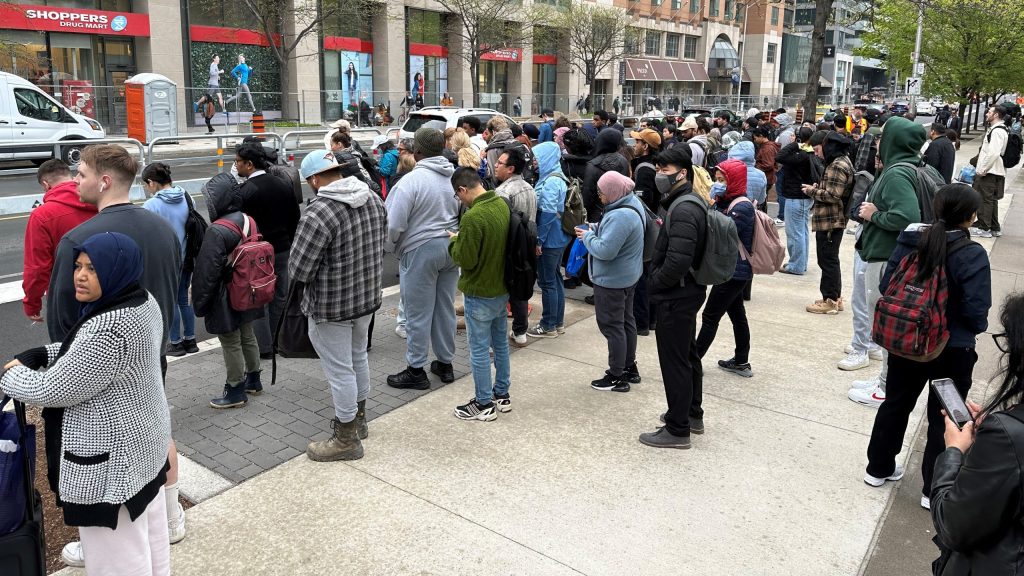Ontario Medical Association releases plan to improve province’s biggest health-care challenges

Posted October 26, 2021 1:23 pm.
Last Updated October 26, 2021 3:25 pm.
The COVID-19 pandemic created a staggering backlog of almost 20 million health-care services, according to a new analysis by the Ontario Medical Association.
Services include doctors’ visits, diagnostic tests, surgeries and more.
This backlog is based on Ontario Health Insurance Plan data collected from the start of the pandemic to September 2021.
The association says even if health-care professionals worked more days and longer hours, and more hospital resources were provided to support them, the backlog would still take years to clear.
The OMA add the backlog does not include the “looming mental health tsunami” or the patients who were not diagnosed or treated during the pandemic, and are now showing up sicker and requiring more aggressive treatment.
“The urgent need to focus on solutions to improve patient care is a top priority for the profession,” said OMA President Dr. Adam Kassam in a statement. “Physicians have a prescription for the future of health care and a roadmap to transformation for Ontario.”
The OMA is calling that prescription the “Prescription for Ontario: Doctors’ Five-Point Plan for Better Health Care”.
The plan to improve these health-care issues include:
- Reducing the backlog of services and reducing medical procedure wait times.
- Expanding mental health and addiction programs
- Improving and expanding home care and other community care
- Strengthening public health and pandemic preparedness
- Giving every patient a team of health-care providers, and linking them digitally
@OntariosDoctors have the plan to fix the cracks in our health-care system. Learn more and have your say at https://t.co/xvBFWJ1SoF #Prescription4ON pic.twitter.com/GQGzZsXFnU
— Ontario Medical Association (@OntariosDoctors) October 26, 2021
The plan was created with the help of more than 110 health-care organizations, social service agencies and community leaders providing input, almost 8,000 Ontarians from 600 communities sharing their views through an online survey, as well as doctors representing a wide range of specialties and regions giving their advice.
The association’s CEO Allan O’Dette says fixing the province’s health-care system will not be quick or easy.
“It requires collaboration among health providers, support from the public, and political will, including significant investment from the federal government, including increased spending through the Canada Health Transfer to the provinces to cover 35 per cent of all health-care costs, up from the current 22 per cent,” O’Dette said.
The association says the backlog and estimated time to catch up on five of the most common medical procedures would be 30 months for knee replacements, 25 months for cataract surgeries, 19 months for hip replacements, 14 months for heart bypass surgery and 11 months for MRIs.
The estimated times are also assuming doctors work 120 per cent more hours than they did before the pandemic.
According to data from the Canadian Institute for Health Information, Ontario spends less on health care per capita than any other province in Canada except British Columbia, and Ontario’s per capita health-care spending is about 8 per cent lower than the average of other provinces.
The association says northern and rural areas in Ontario also see more shortages when it comes to family doctors.
This imbalance is why the OMA says Ontario needs more doctors, personal support workers and other health-care professionals, especially since many are retiring or leaving the profession due to burnout from working during the COVID-19 pandemic.
With a provincial election less than a year away, the OMA says they want all political parties to include their recommendations on their party platforms.
The announcement of the recommendations come as Long-Term Care Minister Rod Phillips says the Ontario government plans to hire 193 long-term care home inspectors by next fall.
He announced Tuesday the province plans to spend $20 million to create a ratio of one inspector for every two long-term care homes and will allow for more proactive visits.
Phillips’ announcement also comes ahead of legislation expected later this week that he says will empower inspectors to lay charges on the spot.
He says the government is following recommendations from the commission that examined conditions in Ontario’s long-term care homes, which saw thousands of COVID-19 deaths and infections during the pandemic.










